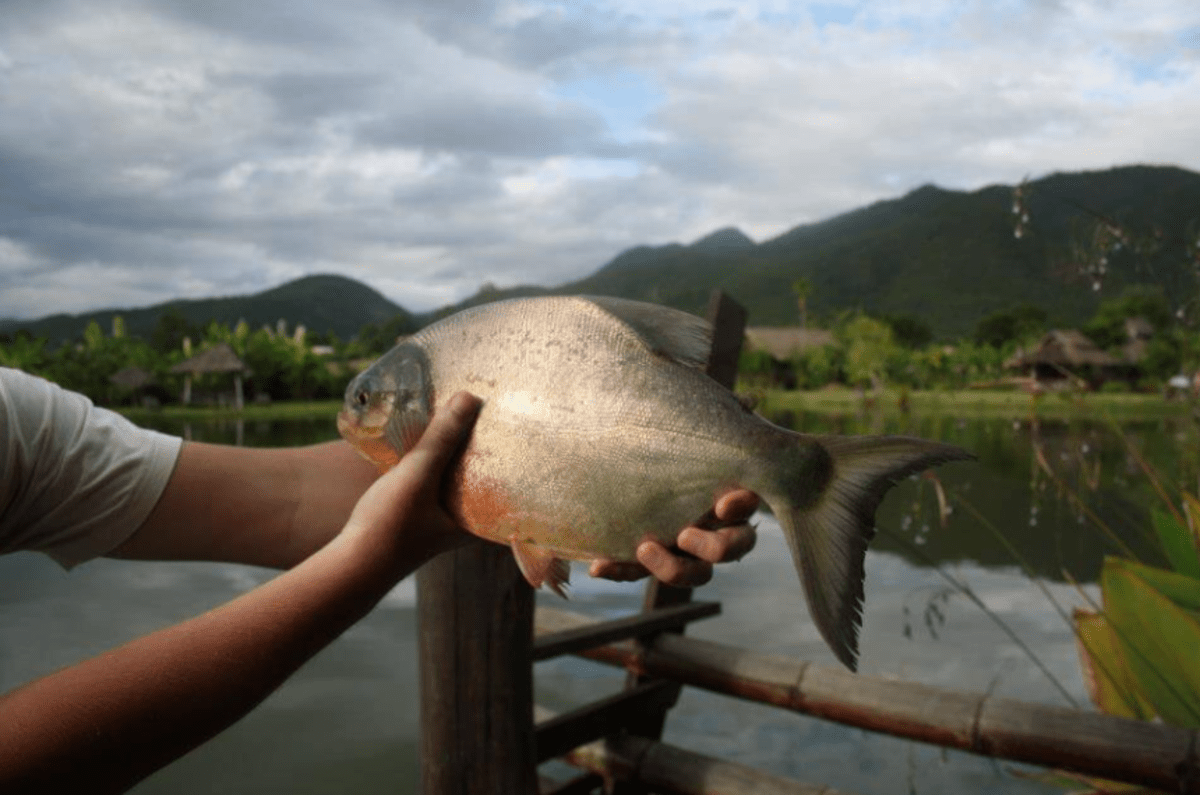Introduction
Definition of Fiskning
Fiskning is the activity of catching fish, either for food, recreation, or commercial purposes. This activity can be performed in various water bodies, including rivers, lakes, oceans, and ponds.
History of Fishing
Fishing dates back to ancient times, with evidence suggesting that humans have been fishing for over 40,000 years. Early fishing techniques included the use of spears, nets, and fishing lines.
Importance and Benefits of Fishing
Fishing plays a significant role in many cultures around the world. It provides food, employment, and recreational opportunities. Additionally, fishing contributes to conservation efforts and helps in the management of aquatic ecosystems.
Types of Fiskning
Freshwater Fiskning
Lakes
Lakes provide a calm environment for Fiskning, with species such as bass, trout, and catfish commonly found in these waters.
Rivers
River fishing offers a dynamic environment where anglers can catch a variety of fish species, including salmon, pike, and perch.
Saltwater Fishing
Ocean Fishing
Ocean fishing can be done from boats or the shore, targeting species like tuna, marlin, and sea bass.
Beach Fishing
Beach fishing involves casting lines from the shore into the ocean, often catching species such as surfperch, striped bass, and flounder.
Fly Fishing
Fly fishing is a specialized method that uses lightweight artificial flies to catch fish. It is popular in both freshwater and saltwater environments.
Ice Fishing
Ice fishing is performed on frozen lakes and rivers, where anglers cut holes in the ice to catch fish such as walleye, northern pike, and lake trout.
Deep-Sea Fishing
Deep-sea fishing involves fishing in the open ocean, far from the shore. This method targets large species such as sharks, swordfish, and grouper.
Fiskning Equipment
Rods and Reels
Types of Rods
Fiskning rods come in various types, including spinning rods, baitcasting rods, and fly rods, each designed for specific fishing techniques.
Types of Reels
Fishing reels include spinning reels, baitcasting reels, and fly reels, which work in conjunction with rods to help cast and retrieve the line.
Fishing Lines
Fishing lines vary in strength, thickness, and material. Common types include monofilament, fluorocarbon, and braided lines.
Hooks and Sinkers
Hooks come in different sizes and shapes, designed for various fish species and fishing methods. Sinkers add weight to the line, helping to cast it further and keep the bait at the desired depth.
Baits and Lures
Live Baits
Live baits, such as worms, minnows, and insects, are natural attractants for fish.
Artificial Lures
Artificial lures mimic the appearance and movement of live bait, attracting fish through their color, shape, and motion.
Nets and Traps
Nets and traps are used to catch fish in larger quantities, commonly employed in commercial fishing and some recreational fishing practices.
Techniques and Tips
Casting Techniques
Overhead Casting
Overhead casting is a common method where the angler casts the line over their shoulder and into the water.
Sidearm Casting
Sidearm casting involves swinging the rod to the side to cast the line, useful in areas with limited overhead space.
Knot Tying
Knowing how to tie various Fiskning knots, such as the clinch knot, Palomar knot, and loop knot, is essential for securing hooks, lures, and other tackle.
Catch and Release Techniques
Catch and release techniques help ensure fish survive after being caught, promoting conservation. This includes handling fish gently, using barbless hooks, and releasing them quickly back into the water.
Reading Water and Weather Conditions
Understanding water currents, temperature, and weather patterns can significantly improve fishing success. Fish behavior often changes with different environmental conditions.
Seasonal Fishing Tips
Different fish species are more active during certain seasons. Anglers should adjust their techniques and target species based on the time of year.
Popular Fiskning Destinations
North America
USA
The USA offers diverse fishing opportunities, from bass fishing in freshwater lakes to deep-sea fishing off the coasts.
Canada
Canada’s vast wilderness and numerous lakes make it a prime destination for fishing, with popular species including trout, salmon, and walleye.
Europe
Europe boasts a variety of fishing environments, from the rivers of Scotland to the coastal waters of Norway, offering species like Atlantic salmon and pike.
Asia
Asia’s extensive river systems and coastlines provide ample fishing opportunities, with notable destinations like Thailand, Japan, and India.
Africa
Africa offers unique fishing experiences, including freshwater fishing in the Nile River and deep-sea fishing off the coast of South Africa.
Australia
Australia is known for its rich marine biodiversity, making it a hotspot for both recreational and commercial fishing. Popular species include barramundi, snapper, and marlin.
Fiskning Regulations and Ethics
Licensing Requirements
Fishing licenses are required in many regions to regulate and manage fish populations. Anglers should ensure they have the appropriate licenses for their location and type of fishing.
Conservation Efforts
Conservation efforts, such as catch and release programs, habitat restoration, and sustainable fishing practices, help maintain healthy fish populations and ecosystems.
Ethical Fishing Practices
Ethical Fiskning practices include respecting fishing limits, avoiding overfishing, and adhering to local regulations to ensure the sustainability of fish populations.
Protected Species and Areas
Certain species and areas are protected to preserve biodiversity. Anglers should be aware of and comply with regulations regarding these protected entities.
Health Benefits of Fiskning
Physical Benefits
Fishing can provide physical benefits, such as improved cardiovascular health, muscle strength, and coordination from casting, reeling, and wading.
Mental Benefits
The tranquility of fishing can reduce stress, anxiety, and promote mental well-being. It offers a chance to connect with nature and enjoy peaceful moments.
Social Benefits
Fishing can be a social activity, fostering bonds between family and friends. It also offers opportunities to join fishing clubs and participate in community events.
Common Fiskning Challenges
Weather Conditions
Adverse weather conditions can impact fishing success and safety. Anglers should be prepared for sudden changes in weather and know how to respond.
Equipment Malfunctions
Equipment malfunctions, such as broken rods or tangled lines, can disrupt fishing. Regular maintenance and having backup equipment can mitigate these issues.
Finding Fish
Locating fish can be challenging, requiring knowledge of fish behavior, habitats, and environmental conditions.
Health and Safety Risks
Fishing involves risks such as sunburn, dehydration, and accidents. Anglers should take precautions like wearing sunscreen, staying hydrated, and using safety gear.
Success Stories and Personal Accounts
Famous Anglers
Many famous anglers, such as Ernest Hemingway and Zane Grey, have contributed to the popularity and culture of fishing.
Personal Fiskning Stories
Anglers often share personal stories of memorable fishing trips, challenging catches, and unique experiences on the water.
Record-Breaking Catches
Record-breaking catches, such as the largest bass or marlin, highlight the thrill and achievement of fishing.
Expert Insights
Interview with a Professional Angler
Professional anglers offer valuable insights and tips based on their extensive experience and knowledge of the sport.
Tips from Fishing Guides
Fishing guides can provide practical advice on local fishing spots, techniques, and equipment, enhancing the fishing experience for enthusiasts.
Future of Fiskning
Technological Advances in Fishing
Advances in technology, such as fish finders, GPS systems, and improved tackle, continue to enhance fishing techniques and success rates.
Sustainable Fishing Practices
Sustainable fishing practices aim to balance the needs of anglers with the health of fish populations and ecosystems, ensuring the longevity of the sport.
Changing Ecosystems and Their Impact
Climate change and environmental degradation affect fish habitats and populations. Understanding these changes is crucial for future fishing practices and conservation efforts.
Conclusion
Recap of Key Points
Fiskning is a diverse and rewarding activity with numerous benefits and challenges. From freshwater to deep-sea fishing, there are countless opportunities for anglers to explore.
Encouragement to Start Fishing
Fishing offers a chance to connect with nature, improve physical and mental well-being, and enjoy quality time with others. Beginners are encouraged to start with basic equipment and gradually expand their skills.
Call to Action for Conservation
Anglers play a vital role in conservation efforts. By practicing ethical fishing and supporting conservation initiatives, they can help ensure the sustainability of fish populations and aquatic ecosystems for future generations.
FAQ
What is the best time of year to fish?
The best time to fish varies by species and location. Generally, spring and fall are prime seasons for many types of fishing due to favorable water temperatures and fish activity.
What is the most challenging type of fishing?
Deep-sea fishing is often considered challenging due to the need for specialized equipment, knowledge of ocean currents, and the physical demands of handling large fish.
How can I start fishing as a beginner?
Beginners should start with basic equipment, such as a rod, reel, and line, and choose an accessible fishing spot like a local lake or river. Learning from experienced anglers or taking a beginner’s fishing course can also be helpful.
What are the basic pieces of equipment needed for fishing?
Basic fishing equipment includes a rod, reel, line, hooks, sinkers, and bait or lures. Additional items like a tackle box, net, and appropriate clothing can enhance the fishing experience.
How does fishing contribute to conservation efforts?
Fishing contributes to conservation by promoting awareness of aquatic ecosystems, supporting sustainable practices, and funding through licensing fees and conservation programs.





